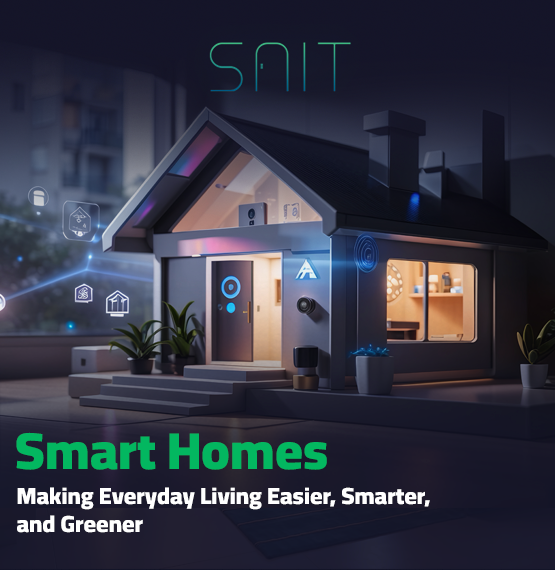Owning a smart home can be a game changer for energy efficiency whether you care more about cutting costs or sustainable energy, having a system that helps you cut costs and supports sustainable living as people care more and more about their impact on the environment and the rising energy costs is definitely a great choice for the future, but how do smart homes actually support energy efficiency? In this blog we will cover the devices and systems that contribute to reducing your electricity bills and why they are a great choice.
What Is a Smart Home and How Does It Help Save Energy?
Smart homes are centralized systems that connect your home’s different devices such as lighting, heating and air conditioning into one hub or app that enables you to control everything with a smart touch. These smart technology solutions are what makes energy efficiency possible by detecting devices with high consumption or efficiencies within the systems, this optimization saves energy automatically. So let’s break down how this happens exactly in a smart home.
1. Smart Lighting with Smart Control
Smart lighting is one of the most effective smart home features for boosting energy efficiency. Instead of manually switching lights on or off, smart light switches and sensors detect room occupancy and adjust lighting automatically, no human input required.
These smart technology solutions also adapt brightness based on natural light. For example, if the sun is already illuminating a room, the system will dim the lights, ensuring efficient use of electricity and reducing unnecessary consumption.
Even better, smart lighting can be controlled remotely using your smartphone or voice assistant, allowing for smart control whether you’re home or away. You no longer need to be physically present to manage your lighting, perfect for busy lifestyles or frequent travelers.
2. Smart Thermostats for Energy Efficiency
Smart thermostats are another excellent addition to any smart home, designed to optimise heating and cooling for maximum energy efficiency. These devices use motion sensors to detect when a room is occupied, adjusting the temperature accordingly to prevent energy waste.
They can also sync with outdoor weather forecasts and change indoor temperatures automatically, if it’s already cool outside, the system won’t overcool your space. With smart control, you can program different temperature settings for different times of the day.
Many smart thermostats also generate detailed consumption reports, giving you insight into your energy habits. These reports help you adjust your routines to reduce usage and costs, a core benefit of smart technology solutions.
3. Energy Monitoring: Track, Adjust, Save
Energy monitoring is essential for any home striving for energy efficiency. With smart energy tracking tools connected to your system, you can monitor usage in real time across all your devices, switches, sockets, appliances, and more.
If you notice that energy spikes during peak hours, you can adjust routines, like running dishwashers or washing machines during off-peak times. These small changes can lead to significant savings.
Integrating energy monitoring into your smart home setup also allows for better control of smart kitchen appliances, smart water systems, and other connected tools, ensuring your home operates only when needed.
4. Energy-Efficient Appliances for the Smart Kitchen and Beyond
Modern smart kitchen appliances are built for performance and sustainability. These energy-efficient devices, like smart refrigerators, ovens, and dishwashers, minimize electricity and water use without compromising function.
For example, smart refrigerators use advanced insulation and temperature control to keep food fresh with minimal energy. Smart dishwashers and washing machines optimize cycles to conserve water and power, especially when used with scheduled smart control settings.
Even beyond the kitchen, pairing these appliances with smart sockets and switches allows you to remotely turn them off when not in use, preventing energy drain and maximizing efficiency.
Why is investing in smart homes a smart move today?
Switching to a smart home can be a great choice for convenience, but it’s not just that, it’s a practical step towards energy efficiency and reducing your electricity bills.
From smart light switches to smart thermostats that accommodate your needs and react to your surroundings, these smart technology solutions reduce waste and save energy
Add to that smart sockets, switches, and energy monitoring tools, and you gain full smart control over your consumption. Making your home a smart, eco friendly and a convenient environment
In a world of rising energy consumption and costs, a smart home is an ideal combination of comfort, savings, and sustainability.
Conclusion
Switching to smart homes doesn’t just give you convenience, it’s also a conscious step towards sustainability and energy savings. From smart switches, thermostats, energy monitors, and even smart kitchen appliances, they all work together to minimize waste and intelligently control consumption.
Simply put, a smart home makes your life easier, more efficient, and more respectful of the environment, with tangible savings on electricity bills.





